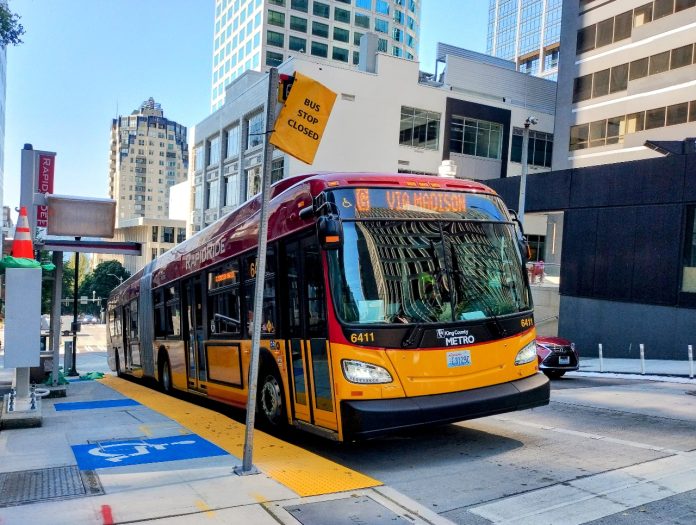
Early Saturday morning, King County Metro will quietly launch its latest RapidRide line, providing Seattle’s Madison Street corridor with some of the county’s most frequent bus service. RapidRide G, the county’s eighth line in the RapidRide alphabet, has been in the works for more than a full decade and represents a big step forward for bus upgrade projects in central Puget Sound.
With 2.8 miles of dedicated bus lanes covering the most congestion-prone areas of the route around Downtown and First Hill, and with many of those bus lanes occupying the center lane of the road to keep motorists out of the way of coaches, the RapidRide G will be as close to a gold-standard bus rapid transit (BRT) line that Seattle has seen to date. On First Hill and Capitol Hill, riders will board buses from median islands in the middle of the street, taking advantage of a wholly unique feature for the region: buses with doors on either side of the coach, like a light rail car.
Procuring these unique vehicles proved to be a challenge, which is partially responsible for the multiple years of delays delivering the project, once pledged to open in 2021. Metro ultimately switched from fully electric buses to diesel hybrids to find a supplier. The project’s setbacks allowed the H Line to leapfrog it and open in March 2023, 18 months ahead of the G Line.
The $144 million project, which was able to take advantage of $80.5 million in federal grants, also received $35.8 million in funding from Sound Transit, making RapidRide G the first Sound Transit 3 project to be officially delivered after voters approved that ballot measure in 2016. Just under $20 million came from the Levy to Move Seattle, approved by voters the previous year.
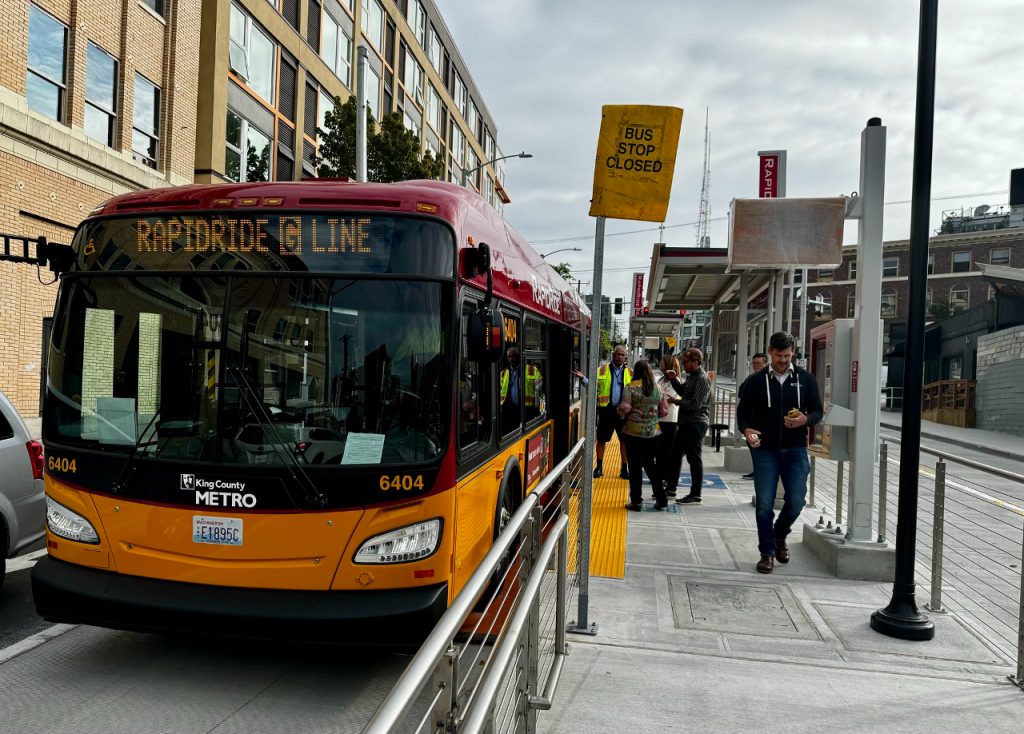
With estimated trip times between 14 and 16 minutes from First Avenue to Madison Valley, the G Line will offer significant time savings over a current bus trip on the corridor, which can take 20 to 30 minutes and require a transfer. But the biggest benefits for riders will come from increased reliability of trips, less time spent in traffic, and increased frequencies. Buses are slated to arrive every six minutes throughout the day Monday through Saturday. After 7pm and on Sundays, buses will come every 15 minutes.
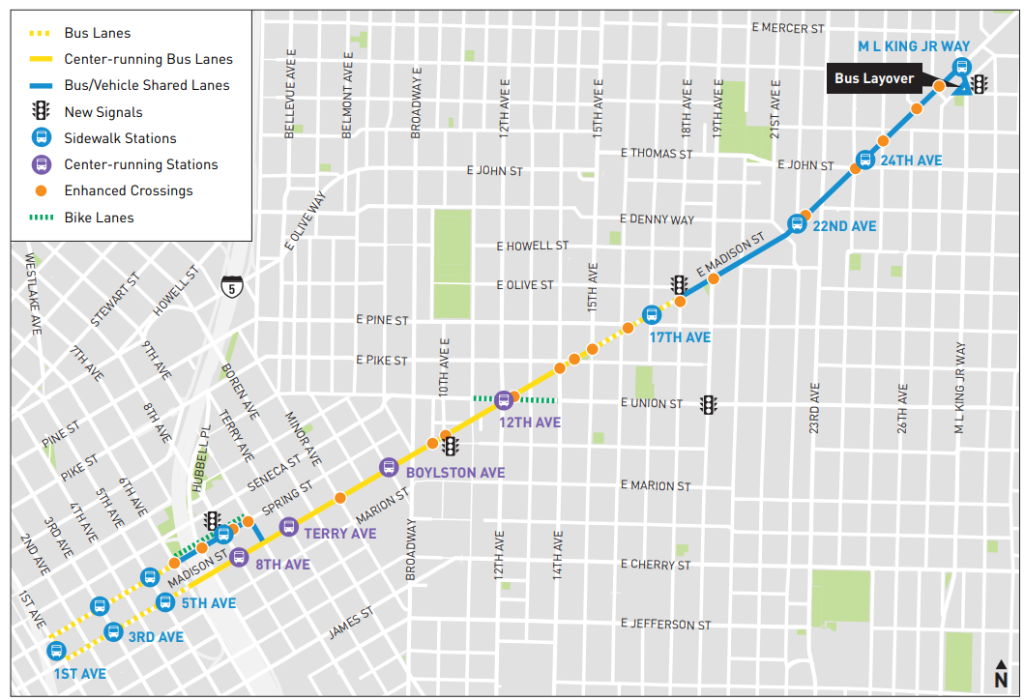
The G Line’s median island bus stops are more elevated than normal bus stops, allowing riders to board level with coaches. Riders using wheelchairs will board using quick-deploying ramps at designated spots on the platforms, and riders with bikes will be able to roll their bikes directly onto the rear of the buses themselves rather than utilizing exterior racks.
On top of these accessibility improvements, the G Line represents the return of transit service to First Avenue, allowing anyone accessing Colman Dock or the Pier 50 fast ferry terminal to transfer to transit without having to climb hills.
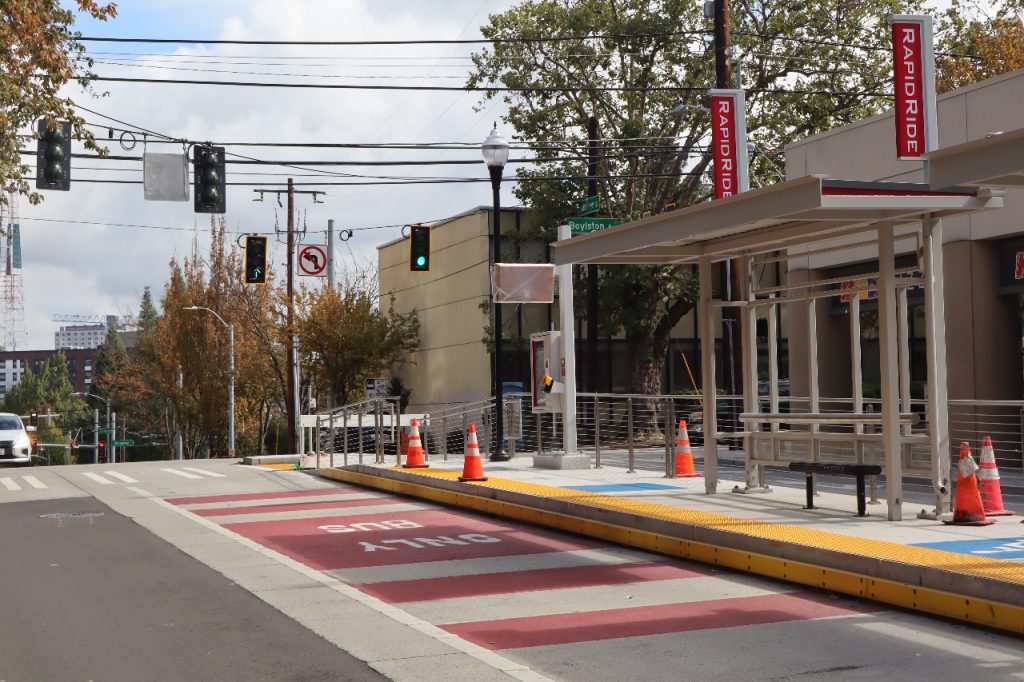
Ultimately, the RapidRide project was much more than a simple bus upgrade, with the Seattle Department of Transportation (SDOT) taking the lead on planning the changes to Madison Street that have paved the way for this week’s start of service. Along with the 21 stations, which includes two upgraded bus stops, the project replaced sidewalks up and down the corridor, replaced asphalt with concrete that can handle frequent bus service, and replaced a 120-year-old water main under Madison. SDOT upgraded traffic signals all along the corridor, including five brand new signals, and construction crews navigated the existing overhead trolley and streetcar wiring that is already in place.
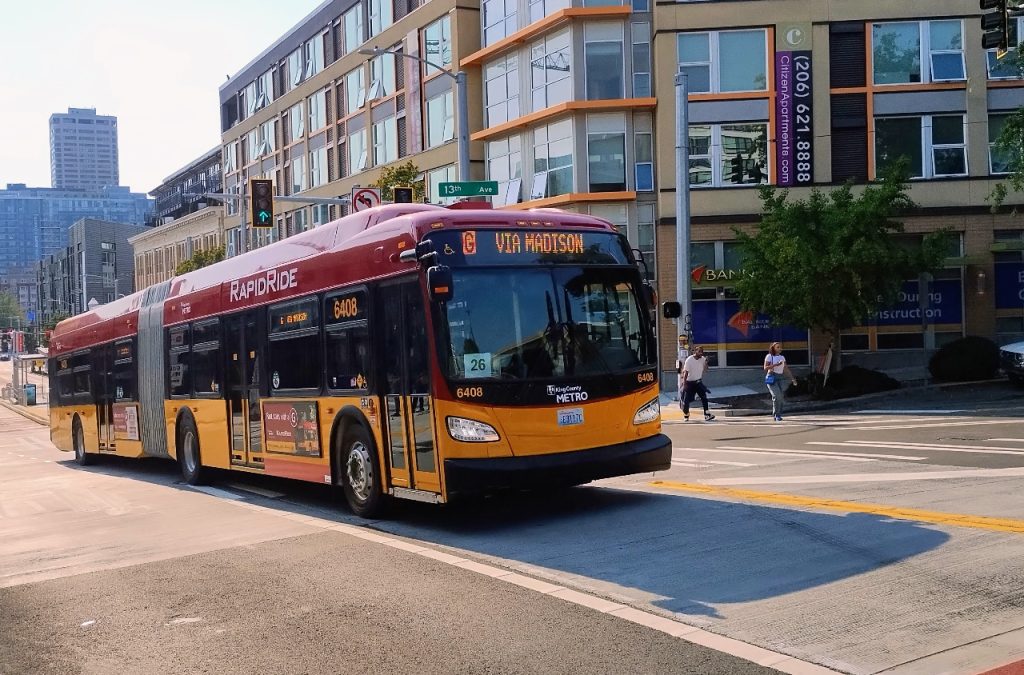
Unlike most RapidRide routes that Metro has launched since it created the program in 2010, the G Line isn’t an upgrade to an existing route but rather represents a brand new transit corridor. The route came out of Seattle’s 2012 Transit Master Plan, a document most Seattleites will probably only remember as one that recommended exploring rapid streetcar routes to Ballard and the University District. The plan put Madison Street in the “top tier” of corridor projects but ruled out a streetcar project due to steep street grades.
As a diagonal street cutting through a rapidly growing cross-section of Seattle loaded with destinations, Madison was an enticing bus rapid transit candidate, as SDOT Director Greg Spotts referenced in his official statement.
“You can count on the G Line to get around the heart of Seattle, connecting the ferry dock and downtown with health care facilities on First Hill and neighborhoods along Madison,” Spotts said. “This infrastructure and mobility project creates safer streets and intersections for all users, while enabling frequent, reliable bus service every six minutes along a unique diagonal corridor within our street grid.”
Initially, the route was only envisioned as running as far east as 23rd Avenue to connect to north-south transit. But community feedback clamoring to connect to additional destinations along Madison Street caused the City of Seattle to propose a new terminus in Madison Valley in 2015, even as it encountered pushback on the idea of laying buses over near MLK Jr Way.
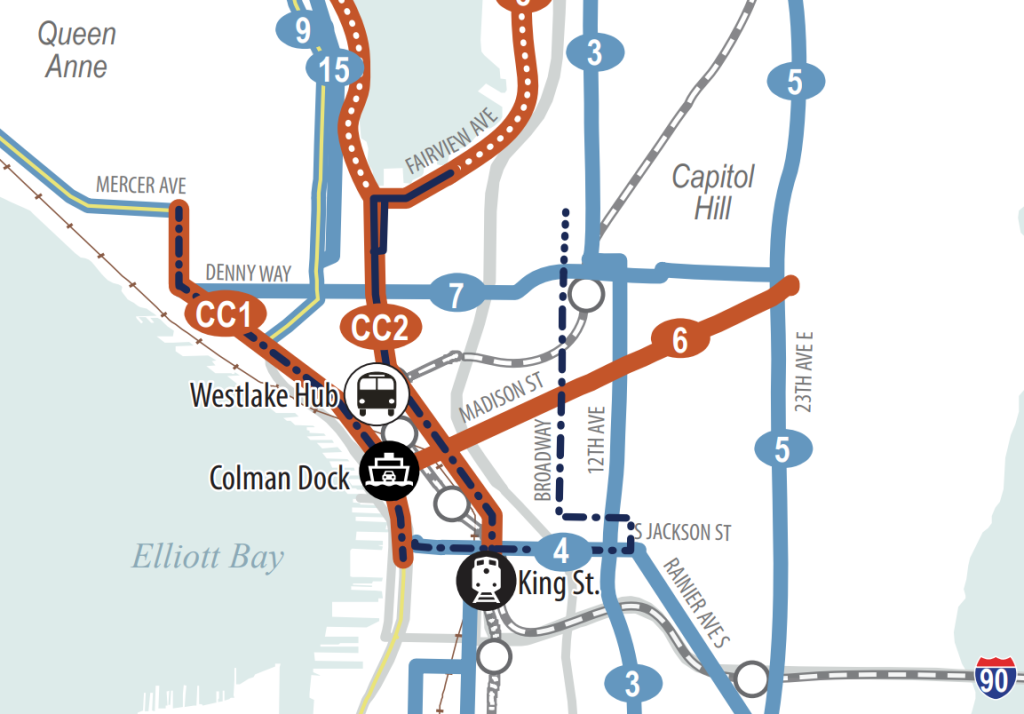
After years of design work, federal funding snags due to a transit-adverse Trump Administration, and pandemic-related delays, the G Line finally broke ground in 2021. The full rebuild of Madison Street heavily impacted neighboring residents and businesses during construction, but ultimately delivered a major upgrade to the corridor.
“This G Line will make our entire transit network more powerful and help get more people out of their cars and into the downtown core — boosting our local economy, fostering community, and helping us to meet our climate goals,” King County Councilmember Teresa Mosqueda said in a statement. “If you ask me, the G in G Line stands for Great!”
The G Line’s launch will bring other major changes to the bus network around Capitol Hill, with the Route 12 moving to Pine Street and the 11 to E Olive Way. The Route 10, 11, 12, and 49 will see reductions in service, with the City of Seattle prioritizing other crosstown routes with funds from the Seattle Transit Measure, including the Route 60 and 125. Metro is also reviving trolley service on Summit Avenue (formerly provided by Route 47) as a tail of the revised Route 3.

Even with parts of the Capitol Hill bus network getting weaker, the G Line’s addition to Metro’s portfolio provides a solid foundation for the next evolution of Seattle’s bus network, with a frequent trunk line along Madison providing reliable service on par with Link light rail. The BRT-level service the route provides may set a standard and inspire Metro and its partners to go bigger on future RapidRide upgrades. After three long years of construction, the G Line is finally here, and the corridor will be forever changed for it.
Ryan Packer has been writing for The Urbanist since 2015, and currently reports full-time as Contributing Editor. Their beats are transportation, land use, public space, traffic safety, and obscure community meetings. Packer has also reported for other regional outlets including BikePortland, Seattle Met, and PubliCola. They live in the Capitol Hill neighborhood of Seattle.

